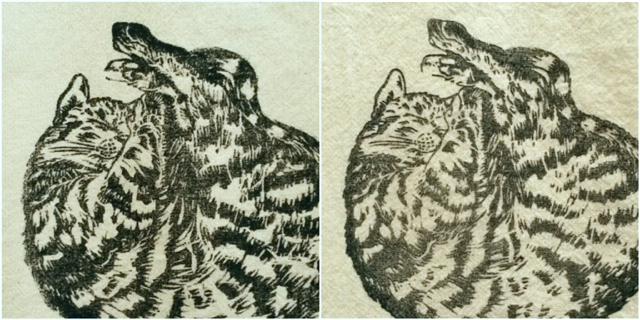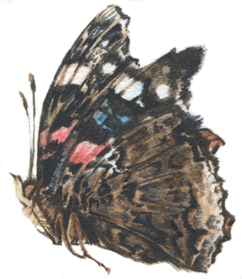
(left = water-based, right = oil-based)
Next to my job at Van Beek Art Supplies, my weekly bug stamp, my watercolour
experiment on panel and the start on a new lino print I’ve been working on another experiment:
printing on textile!
I’ve been using my Sleeping Cat lino from last years’ ‘15 Lino’s in 30 Days’ project.
Next to just trying things out by myself I’ve been reading a lot on the internet too.
The problem I’m running into is that most favourite brands I read about are not available
in the Netherlands and having it shipped here is a bit too expensive for me right now.
A lot of people use Permaset Aqua which is actually made for screen printing but lots of
people succeed perfectly in using it for printing lino on textiles.
After a bit of experimenting with a soft brayer and a thick layer of Permaset Aqua ink I
managed to get some good prints.
But the thing is I also did some prints with some leftover etching ink and I like those
results much better!
As you can see on the picture above, the water-based Permaset Aqua print is much cruder than
the print next to it which is printed in oil based ink. I’ve read more complaints about this on the
internet. Somehow the results with water-based inks in general are always a bit crude.
Not a problem when your design has big shapes but my prints are mostly quite delicate.
And now I’m puzzled on how to continue next.
Do I continue with water-based ink which has a cruder end result but is set after ironing or do
I go for the nicer print which I fear will remain vulnerable for solvents like white spirit.
I tend to go for oil based because it’s more beautiful and I must say next to my studio
clothing none of my textiles ever had a collision with white spirit or any other solvent…
What do you think?
🍃🍂


